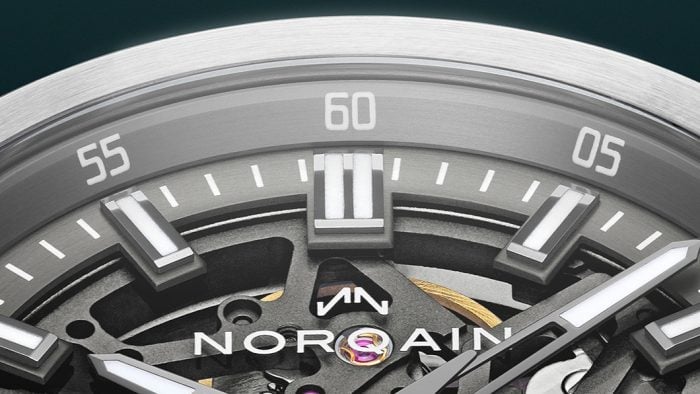It’s a sobering thought, but disasters are inevitable. You may think you’re prepared, but we have some notes, as the emergency kit in your car’s trunk and the granola bars you stashed likely aren’t enough to carry you through the three weeks of hardship you’re in store for. Consider our ideas here, make some adjustments, and we’ll see you on the other side of doomsday.

Power Box | Pocket Socket
Most people probably don’t think too much about where their electricity comes from, or that it really comes from anywhere in the first place. But if that supply gets cut off, they’ll definitely be thinking of it. Gas powered generators can help solve the problem, but eventually that gas is going to run out. Or, depending on the situation, you can’t use the generator. In that case, you need an alternative. Taking a cue from Brazilian inmates, the Power Box and Pocket Socket are foot and hand powered electrical generators, respectively. You can plug right into the device to power whatever it is that’s low on charge. As far as we can tell, there’s no built in batteries, so you can’t charge them up and save them for later, which is kind of a bummer. But you can also look into hooking it up to a Tesla Powerwall, then taking shifts to charge that up. No matter how you handle it, having human-generated power is a good idea. $195 | $65
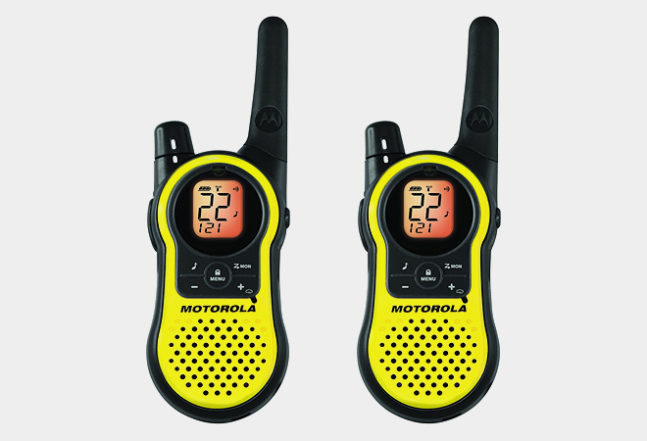
Motorola MH230R Two Way Radio (Pair)
We do have to admit part of the reason we’re recommending these is the nostalgia of it. As we wait for whatever disaster is going to render these mandatory, we can use them like we’re grade schoolers at a camp out. When we do finally need them, they come with a 23-mile range, which is far enough for most of us to stay in contact, as well as ping people in other towns or rescue efforts. They’re also rechargeable, which is huge for situations when you don’t want to stockpile a million batteries in space that could be occupied by food or water, and the bright yellow means it’ll be difficult to lose them. And if you think walkie-talkies are technologically obsolete, think of it this way. Other people definitely have a pair or two stashed away, and simpler technology always forms the basis for disaster operations. Independence Day ended with everyone communicating by ancient Morse Code lines and Day After Tomorrow emphasized how landlines draw their power from the hard line. The first things to go down in a disaster are fancy, complicated pieces of tech, not the radio you keep in your basement. $90

Nokia 3310
Similar to our view on walkie-talkies is our tin-foil hat motivation for keeping an older cell phone at hand. Should our luxurious 4G LTE networks ever go down, we have a strong suspicion it’d be much easier to restore the older, more basic 2G and 3G networks than it would be to get us back to our blazing fast ‘gramming connections. Which makes sense. In the event of a disaster, you don’t need to be able to post captioned apocalypse selfies. You need to be able to call the authorities and blood relatives.
We have to admit, we picked the Nokia 3310 partially because of the frequently circulated meme that calls this phone’s predecessor indestructible. If there’s even trace of that transfered over to the next generation, it’s the phone we want with us after the unimaginable happens. It’s also super cheap, and most phones can call emergency numbers with or without a SIM card inserted. This phone also technically counts as body armor, something pop culture tells us is mandatory in the event of a disaster. $55
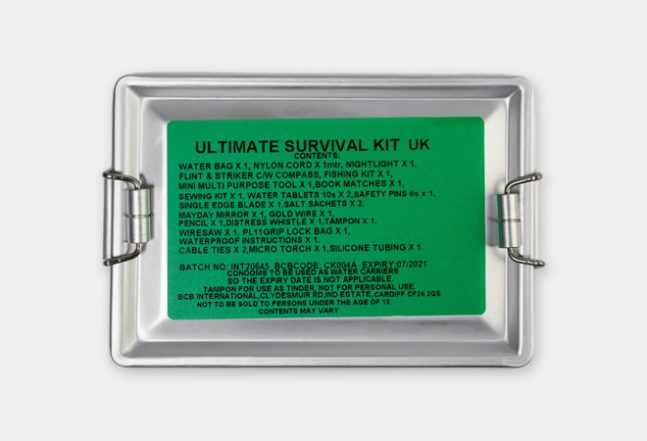
Ultimate Survival Kit
Little weird stuff is always cropping up in a survival situation, where you’re forgetting something or there’s some small tool that could make your work much easier. Having this kit takes at least some of that pressure off, as someone else has done the remembering for you. The kit includes a water bag and tablets, flint and striker, nylon cord, multi-purpose tool, whistle, mirror, and a ton of other stuff that will bail you out of whatever situation you’ve found yourself in. It’s all little stuff you’ll wish you thought of, then remember that you did think of when you pull the kit out. $65
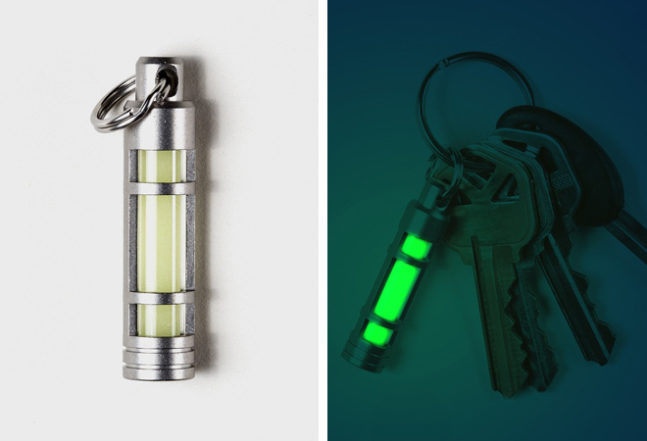
Embrite Glow Fob
This is a solar powered glow stick keychain. That’s pretty much it, but there’s a lot of practicality packed into this novelty. We’d put it on the keys to our bunker, but you’re more than welcome to attach it to any vital thing you’d need to find in the dark. Keys, emergency water, handle for the emergency escape, anything small that’s easily lost that’s crucial not to lose. As with most glow in the dark objects, glow time in the fob depends on how much light it’s received over the day. With plenty of direct sunlight, it’ll give off 12 hours of strong light, more than enough to stumble your way to safety or find whatever you’ve misplaced. $27

Waterbricks
You need to store water. It’s the most basic need humans have, besides air, which you can find almost anywhere. But water doesn’t lend itself well to storage if you don’t have the proper equipment for it and those rain catching barrels get heavy fast. If you had jugs that could stack like Legos, that’d be the best solution to your storage problems. Waterbricks does exactly that. The stack we’ve linked to holds 35 gallons, like your standard drum, but this is a stack of ten 3.5 gallon jugs, each with their own handle. It’s far more convenient and practical for a disaster scenario to be able to carry water to where you need it, rather than have to return to the drum over and over. The stacks also don’t stop at ten. You can buy however many you want. We’re recommending the water jugs, because they’re the most sensible investment, but the company makes food and ammo bricks as well, if that’s what you’re looking for. $180
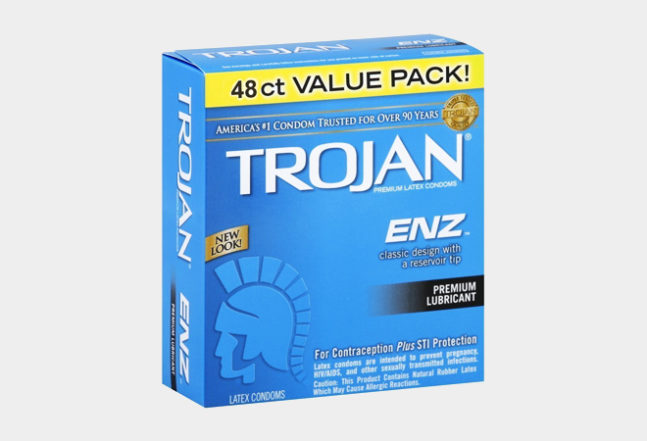
Condoms
We’re not saying stock up on condoms because a disaster drastically increases the amount of sex you’ll be having. It might, we don’t want to downplay your skills. But more than likely, you and your partner’s libido will take a serious hit if something happens. No, we’re recommending condoms because the prophylactic has a long history of versatile usage by US servicemen. Most uses have to do with waterproofing, as you can imagine, especially for items that absolutely cannot get wet. That article focuses on keeping fuses from getting wet or barrels free of debris, but we’re confident a clever civilian could think of other uses. Then there is the basic need to prevent pregnancy, which we shouldn’t downplay in a disaster scenario. We’re not linking to anything here, because you all undoubtedly have your brand loyalties. Go with those.
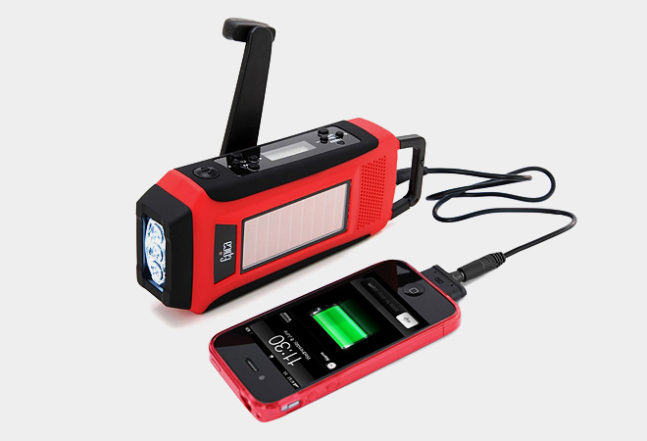
Hand Crank Radio
Countries may be talking more and more about getting rid of AM and FM radio signals, but we’d almost guarantee those would be the first things to get rebooted in case of emergency. Their range is nearly unparalleled and difficult to block, and pretty much everyone has access to or can build some kind of receiver. Both bands are some of the most reliable ways to get crucial information to as many people as possible. If you want to take one more moving part or complication out of your disaster preparedness, invest in a hand crank radio. This is old tech that’s lasted long for a reason and could be the reason your family makes it to the shelter/bus/green zone. $22
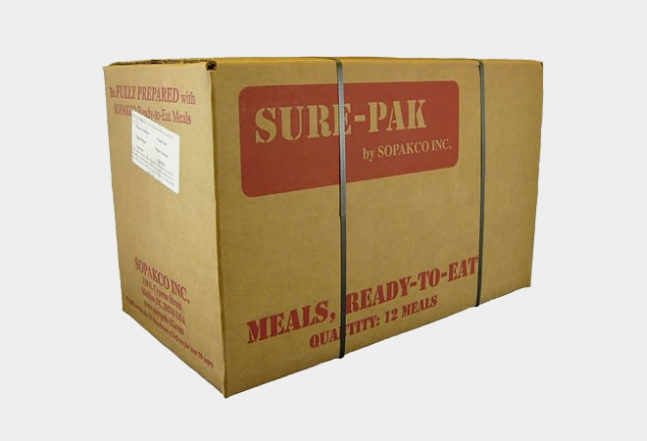
MREs
Military rations have come a long way since the hard tack of the Civil War, the scrounging of the First World War, and the spam of World War Two. A modern MRE (Meal Ready to Eat) only takes a few minutes to prepare, is surprisingly tasty and nutritious, and isn’t particularly expensive. A case of twelve will run you roughly $90, which comes in at $7.50 a meal, less than what most people pay for their food subscription boxes. Most suppliers offer discounts off bulk buys too. Having a few of these stashed away in the closet or basement will bail you out of a number of touchy situation, including basic power outages, natural disasters, invasion by a foreign army, the apocalypse, and anything you can think of in between.
They come with chemical heaters, kind of like faster, hotter hand warmers, and have more menu options than most of the trendy restaurants. Each case has six different entree options, and we’ve seen chicken burrito bowls, spaghetti and sausages, and tortellini, among other things. Their shelf life is advertised as five years, but we’ve known people to eat some from the Vietnam War and all they said was the spaghetti was a little stale. Everyone pictures themselves scrounging tins of baked beans in a disaster, when they could be having a hot meal until the rescue operation gets to them. The only real change you might have to make is adjusting to how the MRE is nutritionally and calorically designed for two meals per day, not three. Menu J | Menu H

SOLARAY Handheld Tactical Flashlight
Part of recommending this flashlight is how in awe of it we are. 1,200 lumens wasn’t even an option we were aware of until we were looking into tactical flashlights. Now that we know, if we can carry a miniature star around with us, we’re going to do it. You can blind assailants, flood areas with light, and signal for assistance, all situations we can imagine getting ourselves in during a disaster. We’ve seen enough movies to know it’s the people with flashing lights on the horizon that get rescued, not the people who pull out dollar store light bulbs. The other benefit of 1,200 lumens is, this light is brighter than every other flashlight, even as it’s running out of charge. And it’s rechargeable. $30

1911 Mil-Spec .45ACP Pistol
We’re not telling you to buy a gun because you’re going to have to defend the homefront in a disaster scenario. Fallout is a great game series, but it’s not an accurate description of what would happen in a disaster or apocalyptic setting. In general, people are far more likely to band together to help their neighbors, friends, and family than they are to become roving bands of marauders. If you need proof, aside from the link we provided, consider yourself. In an disaster situation, are you going to go next door to pillage or make sure your neighbors survived?
That said, there are still people who loot and riot during these situations, so having some form of defense isn’t a bad idea. It’s also more about deterrence too. In all likelihood, you’ll never use it beyond range practice, the odd competition or two, and cleaning. We’re also assuming you’re not going to be a bully about it. This is about protecting your family and yourself from potential threats, not waving a handgun around until all your problems escalate. Take the home defense approach, not the combative, confrontational one, and most people won’t even know you have it. $726


